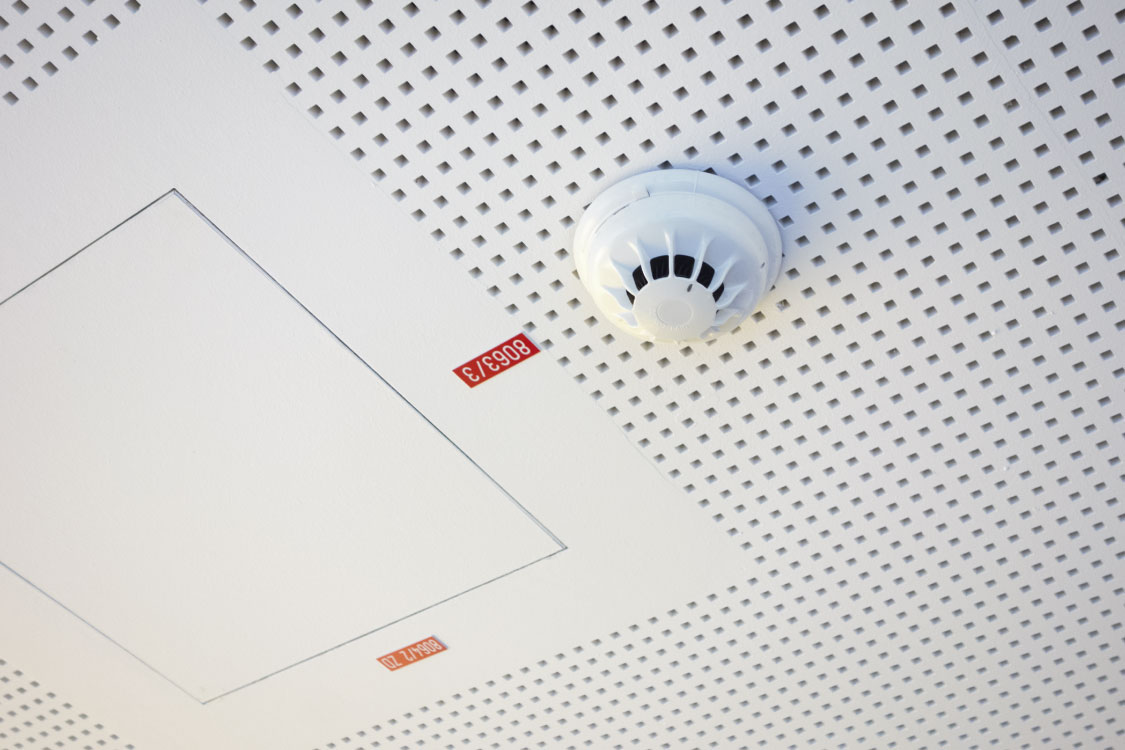19 May 2021
How Do Smoke Detectors Work?
Fire safety regulations state that smoke alarms should be installed on every storey of a property. We’re all familiar with the sound of a smoke alarm, whether it’s because of a real fire, burning toast or simply testing the batteries – but how do they actually function? In this article, the team at Fire & Security Group will take you through all you need to know about how smoke detectors work.

Photoelectric Sensors
One type of smoke detector is a photoelectric detector, which makes use of photoelectric sensors. Sensors like this are used in a number of environments, often triggering an alarm if something breaks the beams that the sensor is emitting. In smoke alarms, these sensors are positioned at 90-degree angles to each other – this is to increase their sensitivity and make it easier to detect smoke.
Light is always entering the detector from a source, whether it’s a window or a lightbulb. When smoke is present, it will block some or all of the light particles, making itself known to the detector. The sensor sets off the alarm, the people in the building are alerted, and the problem can be dealt with or the building can be evacuated if necessary.
Ionisation Sensors
Ionisation detectors work differently, using a more complex process to detect smoke. These detectors use something called an ionisation chamber, which is created by a small amount of radioactive material passing between two electrically charged plates. This combination of radioactive material and charged plates ionises the air, and a current is created. When smoke enters the detector, it disrupts the current, and the alarm will then sound.
It’s important to note that the amount of radiation in ionisation alarms is extremely small, and so poses no health risk.
What’s the Difference Between Photoelectric and Ionisation Smoke Detectors?
There’s a few differences between the two types of smoke detectors, with one of the most significant ones being their respective levels of sensitivity. Photoelectric detectors are generally less sensitive – they’re better suited to fires or materials that burn with thick smoke. For this reason, they’re not ideal for homes, as they may take longer to detect lighter levels of smoke from things like toasters or hobs.
Ionisation detectors are cheaper than their photoelectric counterparts, and their higher sensitivity means they can detect smaller amounts of smoke – it’s this that makes them such a common presence in residential properties around the world.
Each type of smoke detector works differently but serves the same purpose. For smaller spaces and areas where a fire might spread quickly, an ionisation smoke detector may be beneficial, as they’re likely to detect smoke quicker and give you more time to react. However, there’s no way to predict what type of fire might break out in your home – it might be a small fire with wisps of smoke or a fire that smoulders – so the most effective form of smoke detection is to have both types of smoke detector in your property.
Fire & Security Group are experts in the installation of fire alarms, fire extinguishers and fire safety equipment for businesses across the UK. If you’d like to know more about our services, or if you’d like to discuss your requirements, contact us today.

